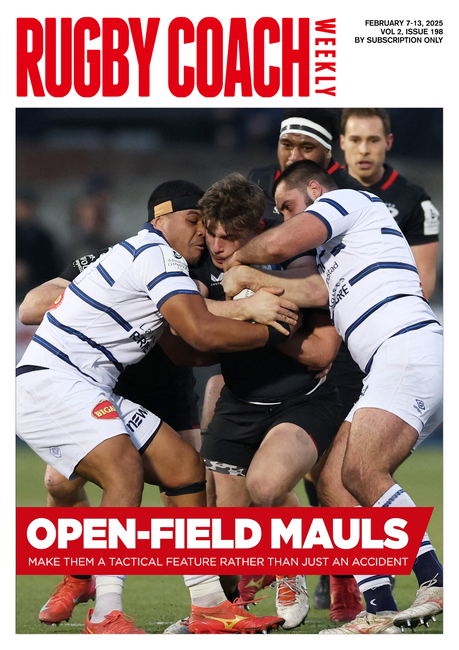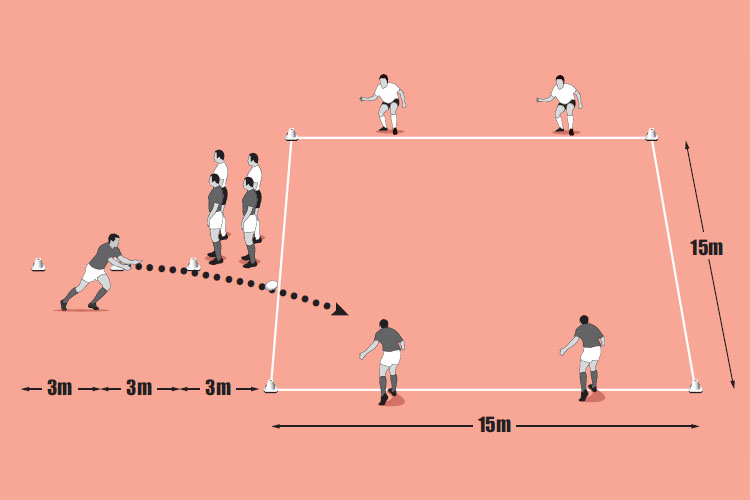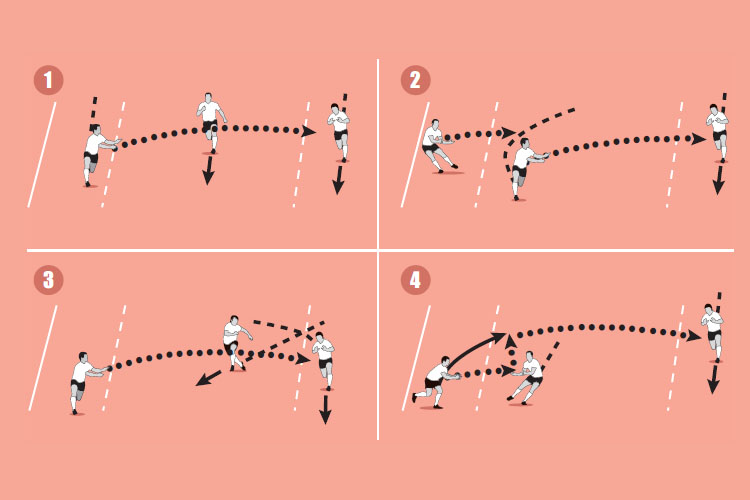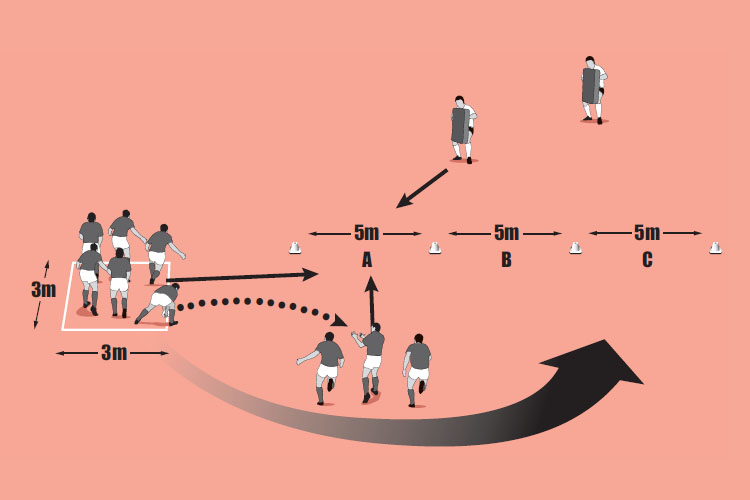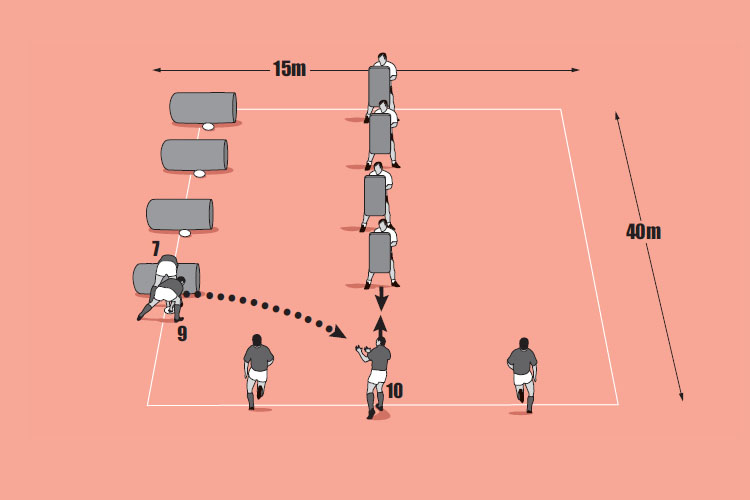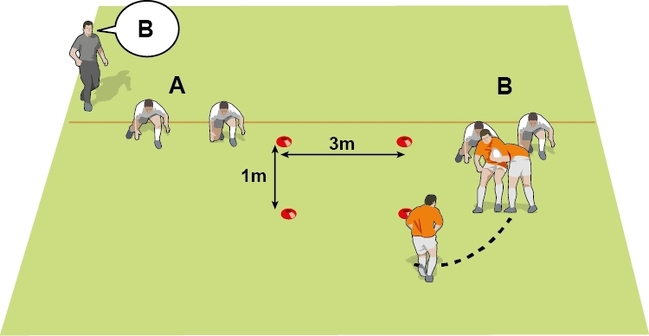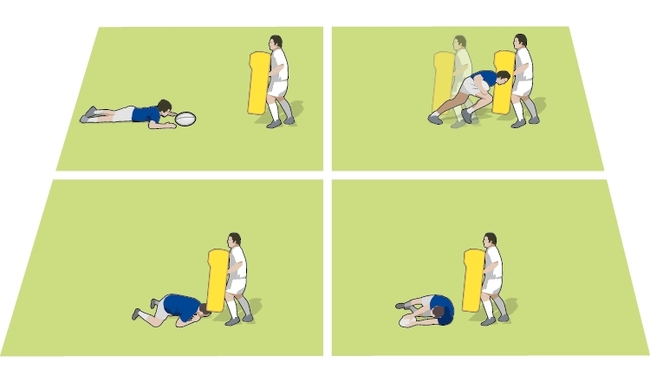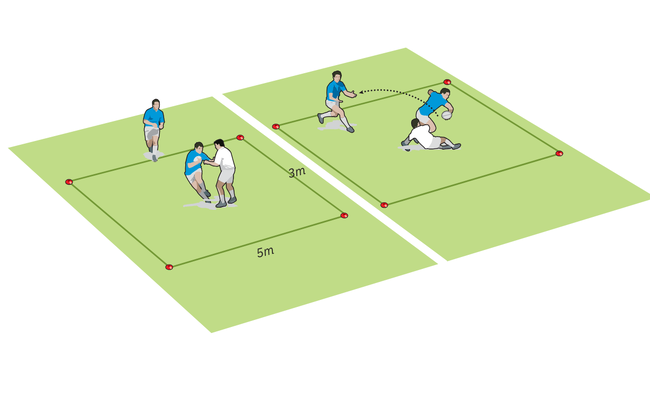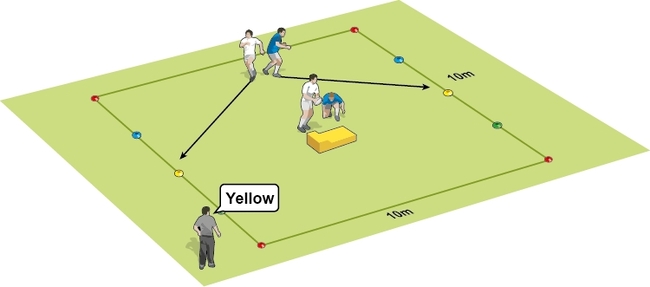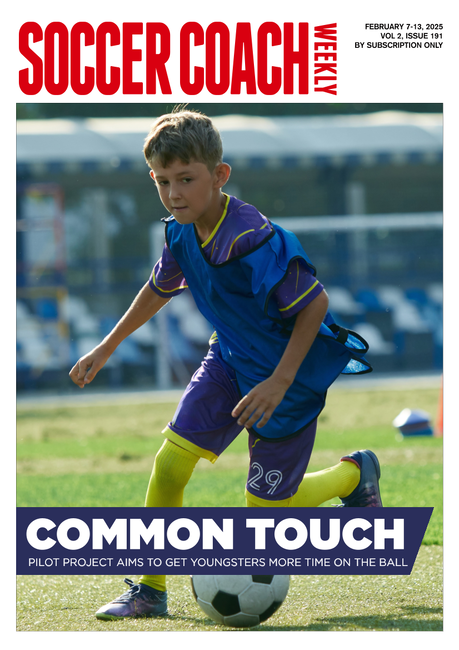Your best friend is a ruck buddy
Retain more possession in the tackle contest to generate more quick ball. Make the nearest support player to the ball carrier get closer and make better decisions. This works well in close quarters where there are lots of defenders. Use this session to improve awareness and communication skills.
Warm up time: 5-7
Session time: 8-10
Development time: 10-15
Game time: 15-20
Warm down time: 5-8
What to think about
Lots of rugby is played in congested areas, where the ball carrier might find himself facing a wall of defenders. To pass the ball simply moves a problem on and puts another player under pressure. Use this session to work on the role of the first support player. He needs to be very close to the ball carrier. This gives the ball carrier confidence as well as immediate support if there are two or more defenders attacking the ball carrier.set-up
- Support: Get close to the ball carrier and tell him you are there.
- As the ball carrier goes into contact, identify the threats and decide if you are going to: Latch on and drive, rip and roll, or protect the ball carrier if he goes to ground.
What you get your players to do
Put a ball carrier and support player about 5m away from a ruck pad holder (see picture 1[1]). Get the ball carrier to run forward, step either side of the ruck pad holder and go to ground. The support player has to drive away the ruck pad holder before he has a chance to go over the ball carrier (see picture 1[2]). Develop by getting the support player to rip the ball away on contact, or latch on and drive the ball carrier through the contact area.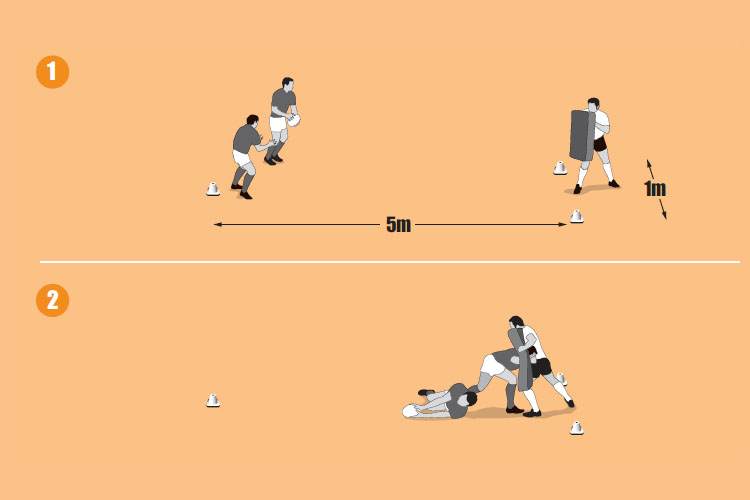
Development
Put defenders in 1m gates spaced about 3m apart. Call out which gate two attackers must go through (see picture 2[1]). The ball carrier aims to get through the gate while the defender tackles him. The other defender runs back to a cone 5m behind before supporting his team mate (see picture 2[2]). The close support player needs to decide how best to support the ball carrier. Do not allow offloads.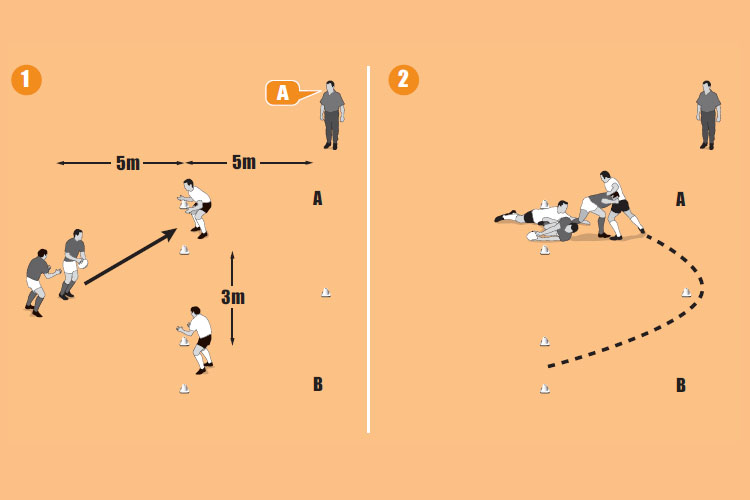
Game situation
Put two attackers in the middle of an 8m x 4m box and two defenders at each end of it (see picture 3). Give the attackers one minute to score as many points as possible. They run at the defenders. If they score a try they get two points. If they make contact but retain the ball (inside the area) for five seconds they get one point. If they are tackled out of the box, or lose the ball, they turn and attack the other way. Defenders can only come forward once the attackers have crossed the halfway line. Adjust the dimensions and timings of the box to suit your players.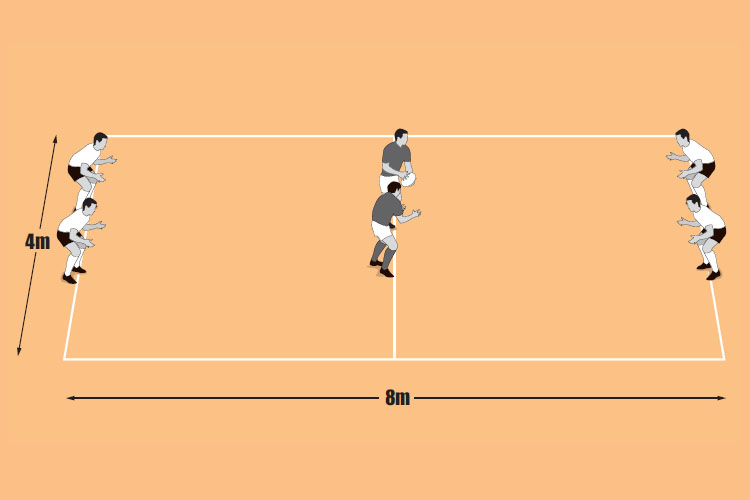
What to call out
- “Tell the ball carrier what to do: Stay up; my rip; go to ground”
- “Don’t dip too early – stay balanced. Drive low when the ball carrier goes low”
- “Ball carrier – beat the defender first. Listen to the support player for instructions”
Newsletter Sign Up
Coaches Testimonials

Gerald Kearney, Downtown Las Vegas Soccer Club

Paul Butler, Florida, USA

Rick Shields, Springboro, USA

Tony Green, Pierrefonds Titans, Quebec, Canada
Subscribe Today
Be a more effective, more successful rugby coach
In a recent survey 89% of subscribers said Rugby Coach Weekly makes them more confident, 91% said Rugby Coach Weekly makes them a more effective coach and 93% said Rugby Coach Weekly makes them more inspired.
Get Weekly Inspiration
All the latest techniques and approaches
Rugby Coach Weekly offers proven and easy to use rugby drills, coaching sessions, practice plans, small-sided games, warm-ups, training tips and advice.
We've been at the cutting edge of rugby coaching since we launched in 2005, creating resources for the grassroots youth coach, following best practice from around the world and insights from the professional game.


